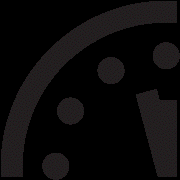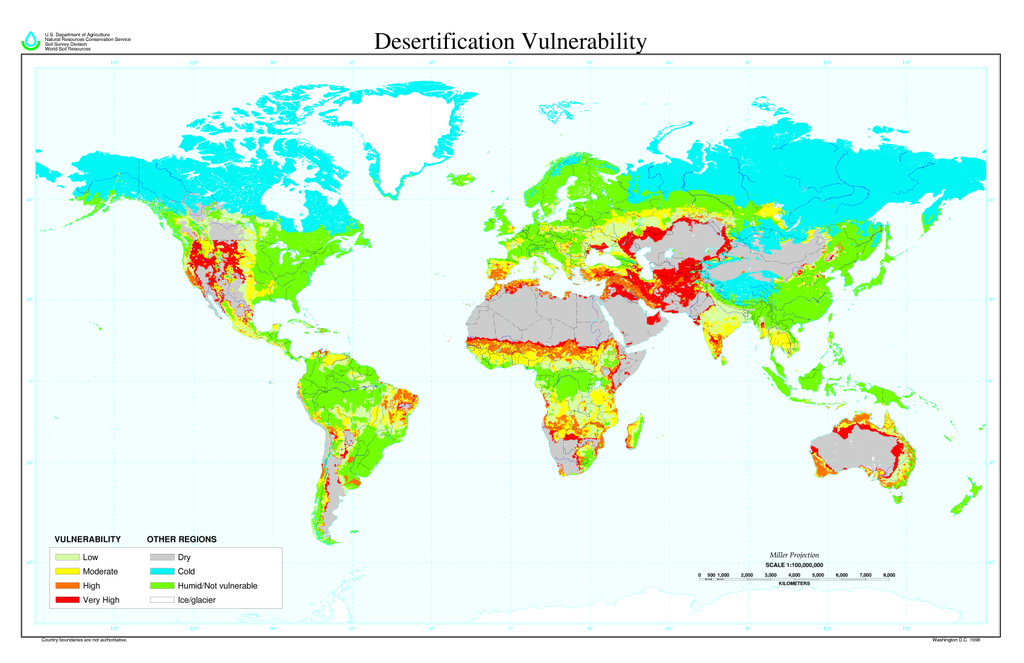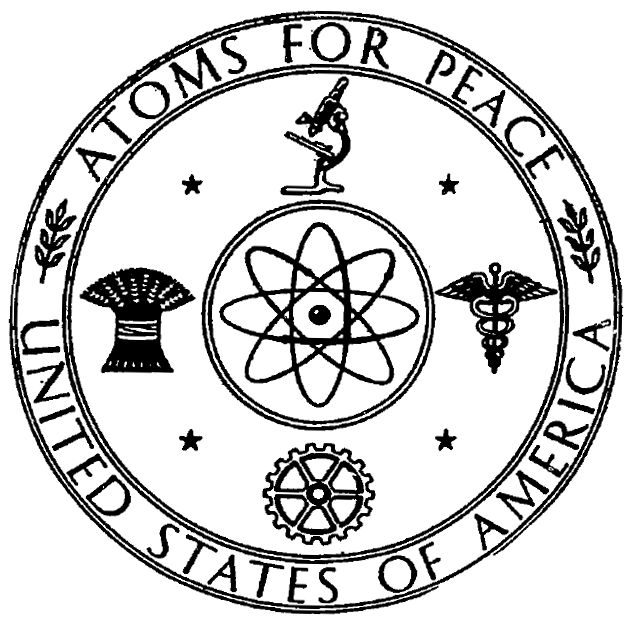Just this week, the Trump administration announced via its Nuclear Posture Review that it will be seeking to develop
‘useable’ nuclear weapons. The administration’s strategists are reportedly considering their potential use in a first or retaliatory strike in areas such as the Russian-Ukraine frontier and in a North versus South Korea / US conflict. Meanwhile, in Thailand, moves are underway in the
Bangkok Post and
The Nation to lobby for UNESCO oversight of the development of private nuclear fusion in order to leverage a Universal Peace Treaty. Such a treaty would be the culmination of decades of work by UNESCO and a major achievement for the UN, one that could re-stabilize global geopolitics and avoid the development of ‘useable nuclear weapons.
A ‘useable’ nuclear weapon, in military terms, is a low yield tactical, not strategic weapon. This requires some explanation. A tactical nuclear weapon is a battlefield-level weapon that could be used to target an enemy artillery position or military camp or to deny area use. A strategic nuclear weapon is one that is used in all-out nuclear war to destroy enemy targets, such as capital cities. Battlefield-level tactical weapons were first developed in the 1950s, especially in the form of
nuclear artillery. Battlefield nuclear weapons were only tested by the US once, in 1953.
The video shows an M65 Atomic Cannon firing a shell 6.25 miles. The explosion is the low airburst of a 15 kiloton yield atomic shell. Battlefield nuclear artillery were developed by both the US and the USSR, as well as France, into the 1990s.
In 1991, the US made the decision to decommission all its nuclear artillery, following the end of the Cold War. The USSR followed in 1992, deactivating its nuclear artillery units in 1993. The US reportedly dismantled its last shell in 2004, and by this time Russians had done likewise. However, battlefield nuclear armaments were retained by both sides. The US, for instance, retains approximately 540 B61 thermonuclear gravity bombs. The bomb can be ‘dialed’ to achieve low-to-medium yield nuclear explosions, from 0.3 to 340 kilotons and can be used in both air burst and bunker penetrator modes.
Figure 1: A B61 Training Unit Battlefield Atomic Weapon (Courtesy Wikipedia)
In the eyes of the Trump administration, the use of ‘useable’ battlefield nuclear weapons requires two developments. The first is a low-yield thermonuclear Trident D5 warhead, suggested for the new
Columbia-class ballistic missile submarine. The main criticism of this approach is that the launch of such a warhead would give away the position of the submarine, making it vulnerable to a counter-attack. A secondary criticism is that the US already possesses weapons such as the B61.
The second requirement is a policy one and increases the scenarios when the Trump administration can use a nuclear weapon. The expansion apparently includes a green light for tactical nuclear weapons as a response to a non-nuclear attack that caused mass causalities, for instance a North Korean artillery barrage of Seoul. A nuclear attack could also get the green light if an enemy attacked critical infrastructure or nuclear command and control facilities, such as a Russian attack on Ukrainian power stations, using conventional weapons.
The main criticism of this position is that it would lead to nuclear war, mirroring the mind-set that is leading North Korea to develop nuclear weapons as well as the Russian development of new silo-based missiles, the new Borei class of nuclear ballistic missile submarines, and new rail-mobile missiles, together with its upgrades of other intercontinental ballistic missiles. This is why the Doomsday Clock, maintained since 1947 by the members of the Bulletin of the Atomic Scientists' Science and Security Board, is at 2:30 until midnight, midnight indicating a global catastrophe. Or, as the Bulletin puts it:
"A dangerous nuclear situation on multiple fronts. Predictability and continuity are often prized when it comes to nuclear weapons policy, because the results of miscommunication or miscalculation could be so catastrophic. Last year, however, the nuclear weapons continuity most in evidence was negative: North Korea’s continuing nuclear weapons development, the steady march of arsenal modernization programs in the nuclear weapon states, simmering tension between nuclear-armed India and Pakistan, and stagnation in arms control."
Two and a half minutes to midnight is the closest to midnight since 1953, the height of the Cold War.
Figure 2: The Doomsday Clock’s Present Position (Courtesy Wikipedia) See the Doomsday Clock Complete Timeline here.
The use of battlefield atomic weapons is not inevitable. There exists an alternative: perpetual peace, guaranteed by a Universal Peace Treaty.
Perpetual peace is a philosophical concept first proposed in the 18th century by the French negotiator Charles-Irénée Castel de Saint-Pierre. It was then popularised by the German Philosopher Immanual Kant and Jeremy Bentham.
In 1795, Kant proposed in his essay “
Perpetual Peace: A Philosophical Sketch” three foundational articles to ensure a universal peace: that every state should be a republic; that national and international law should be founded upon a federation of states; and that the concept of world citizenship should extend to universal hospitality and no more, i.e., full freedoms and liberties one would grant to a guest, but not the right to vote.
Subsequently, Jeremy Bentham, in his “
A Plan for a Universal and Perpetual Peace” suggested a ‘light’ version of Kant’s proposal. He argued that Perpetual Peace could be founded on disarmament, arbitration, and the renunciation of colonies. In other words, it could occur irrespective of the nature of states, international law, and global citizenship. In these forms, Perpetual Peace is the philosophical basis for peace and conflict studies.
Perpetual Peace is also a pragmatic approach to peacebuilding, existing in two basic forms, an ‘open version and a ‘closed’ version. The open version is the result of the
nonviolence and
nonkilling movements and their various
peacebuilding initiatives. Globally, these are represented in the form of the UN Peacebuilding Commission and the UN Peacebuilding Fund, largely active in ‘hot conflicts’ in Africa.
In addition, UNESCO is the lead agency for preventing or mitigating the impact of war through promoting pluralism, on the basis that a lack of respect for diversity leads to war. UNESCO has sponsored numerous international treaties on this basis, including the 1954 Hague Convention for the Protection of Cultural Property in the Event of Armed Conflict, the 9/11-triggered Universal Declaration on Cultural Diversity, and the 2005 Convention on the Protection and Promotion of the Diversity of Cultural Expressions. This approach has generally made steady progress, except in the case of radical Islamic groups such as Islamic State and the Taliban, which deliberately target cultural artefacts for destruction.
The ‘closed’ version of the Perpetual Peace campaign is the Perpetual Peace Project. This is a
pragmatic attempt by the United Nations University, the European Union National Institutes of Culture, the International Peace Institute, the Slought Foundation, and Syracuse University Humanities Center to educate global leaders about perpetual peace, necessarily in closed-door events. The Perpetual Peace Project comprises educational initiatives such as roundtables, commissions, exhibitions, and publications. The main obstacle to the initiatives of the Perpetual Peace Project is the fact that major leaders such as Kim Jong Un and Donald Trump are unlikely to pay much attention to peacebuilding.
This brings us to the issue of the Universal Peace Treaty. The point of a Universal Peace Treaty would be for humanity to take the highest possible moral stance regarding its own future in the face of a
potential descent into barbarism, such as due to global climate change, by outlawing war and securing
world peace. This may sound radical and is – until we carefully consider the implications of nuclear fusion energy for humanity, which the Bangkok Post and The Nation columns, together with this column, seek to do.
Fundamentally, wars develop in poverty-stricken countries over either territory or resource extraction, ranging from water to mineral wealth, such as gold, diamonds, and oil. As the global population increases and global climate worsens, low-level human conflicts are liable to persist and worsen. In the Middle East, concern over water is also fueling inter-ethnic rivalries involving countries like Israel, Turkey, Iran, Iraq, and the State of Palestine. Conflict over oil is also a problem for the Middle East countries and, notably, in the Spratly Islands, involving ASEAN member countries.
In this light, the use of the announcement of nuclear fusion energy to secure a Universal Peace Treaty for calm reflection for humanity to consider what fusion energy can do makes sense. The immediate needs would be to license the technology for fusion energy reactors to be mass produced and rolled out by international corporations, probably ones already with experience in fission, such as Electrabel (Belgian), the China National Nuclear Corporation, Nucadvisor (French), Rosatom (Russian), E.ON (German), and GE Hitachi Nuclear Energy (US/Japan). This could be achieved in a couple of decades and would replace all fission and coal plants down to about 300MW by the end of the century, keeping global warming under 4 degrees Celsius by 2100.
A second imperative would be to combat
desertification. Especially in sub-Saharan Africa, one cause of conflicts has been increasing desertification, caused by the expansion of the Sahara and exacerbated by global warming.
Figure 3: Desertification Vulnerability (Courtesy Wikipedia)
As can be seen from the vulnerability map, desertification affects dozens of countries. Nuclear fusion can power desalination plants and pipe fresh water to secure low-to-moderate areas and to begin pushing back against high and very high vulnerability areas.
Re-foresting these zones requires massive irrigation but is achievable. The
Great Green Wall of China, also known as the Three-North Shelter Forest Program, provides valuable lessons, including the need for diversity, for the use of enclosure, and for huge quantities of water to avoid depletion of the water table. The result can be richly diverse carbon sinks which, when applied globally, can actually reverse the effects of global warming. In addition, reforesting the Sahara and reintroducing arable crops would stabilize thousands of square miles of land, reducing population pressures in Africa, the Middle East, and China.
Finally, nuclear fusion provides the potential for humanity to go into space, united. At present, China is banned from the international Space Station due to the objection of the United States over China’s illicitly obtaining US intellectual property.
Nuclear fusion rockets have long been advocated not just to replace chemical rockets but to span the space between planets and carry humanity to Mars, the first of our planetary colonies. Yet, the cost of building and fueling rockets and establishing permanent colonies would still be significant and require a global effort, perhaps a global corporation with international contributors.
"One practical objection to leveraging universal peace off the announcement of a net energy nuclear fusion reactor would be whether a Universal Peace Treaty could ever get off the ground. In reality, it would require US backing. If the US took this high moral stance, the Russians would have to back it, then the world’s other countries would fall into line. While the US has a nuclear stockpile of 4,480 weapons, historically, the US has also strongly supported the use of nuclear technology for peace. In 1955, President Dwight D. Eisenhower delivered the famous ‘Atoms for Peace
speech (transcript
here). This speech set up the International Atomic Energy Agency (IAEA) as a UN agency, the purpose of which today is to regulate the world’s atomic energy. Eisenhower’s speech also first proposed nuclear decommissioning. It also strongly emphasized peace. As Eisenhower noted:"
The more important responsibility of [the IAEA] would be to devise methods whereby this fissionable material would be allocated to serve the peaceful pursuits of mankind. Experts would be mobilized to apply atomic energy to the needs of agriculture, medicine and other peaceful activities. A special purpose would be to provide abundant electrical energy in the power-starved areas of the world.
Eisenhower’s proposals adopted the highest possible moral stance and were delivered in the hope that “all peoples of all nations… see that, in this enlightened age, the great Powers of the earth, both of the East and of the West, are interested in human aspirations first rather than in building up the armaments of war.” Eisenhower also pledged to “open up a new channel for peaceful discussion and initiative… to the many difficult problems that must be solved… if the world is to shake off the inertia imposed by fear and is to make positive progress towards peace.”
Figure 4: US Atoms for Peace Symbol, 1955 UN International Conference on the Peaceful Uses of Atomic Energy (‘Atoms for Peace Conference’) (Courtesy Wikipedia)
To overcome US-Russian enmity and the atmosphere of fear, other than setting up the IAEA and introducing the principle of nuclear decommissioning, Eisenhower’s speech directly led to the Atoms for Peace programme. This brought a low yield nuclear medicine reactor to most of the world’s stable countries. Thus, there is a heritage of using nuclear technology for peace which a Universal Peace Treaty could build on.
In terms of how the Universal Peace Treaty will be implemented by signatory states, one option would be mandatory cross-cultural alternative national service programmes. Mass civic service, overseen by the UN, could help bridge ethnic barriers in such inter-state and intra-state conflict hot spots as Kashmir, Iraq, Syria, Israel, the Pakistani Federated Tribal Areas, the Iranian-Pakistani Balochistan border, and the Deep South of Thailand. Mandatory mass alternative service would place people from one ethnicity in conflict in the area of another ethnicity in a conflict area, with community guarantees of safety, the use of GPS technology to track service members, and UN blue helmet security sourced from an acceptable third country. For instance, Pakistani youth would do civic service and reconstruction in Indian Kashmir, and Indian youth in Pakistani Kasmir, with security provided by Thai blue helmets. In the Deep South, Thai Buddhists would do civil reconstruction work in majority Thai Malay villages, and vice versa. To reduce casualties, participating villages would be ‘twinned’ and service members would start only in ‘green zones’. As the alternative service programme develops, a ‘peace frontier’ would be advanced into neighbouring, higher conflict zones, which would slowly become less violent as a spirit of reciprocal altruism developed.
To conclude, returning to the issue of global atomic weapons versus a Universal Peace Treaty, we are living in an era where the resurrection of battlefield atomic weapons and the situation in the Korean Peninsula provides a real cause for fear. It makes complete sense for countries like the US, Russia, and China to come together under a reinvigorated Atoms for Peace Programme to mass manufacture fusion reactors, respecting patents and seeing the opportunities for partnerships. In the face of signatures to the Treaty by countries like South Korea, rogue nations such as North Korea will face a choice: to sign, or to become even more of a pariah state. As the Treaty enters into effect, together the Global North and Global South will fight to provide cheap energy sufficient to combat global climate change and desertification. Together, humanity can develop fusion-powered spacecraft to explore our solar system as well as their successors, fusion-antimatter hybrid drives, to reach out to the stars.




